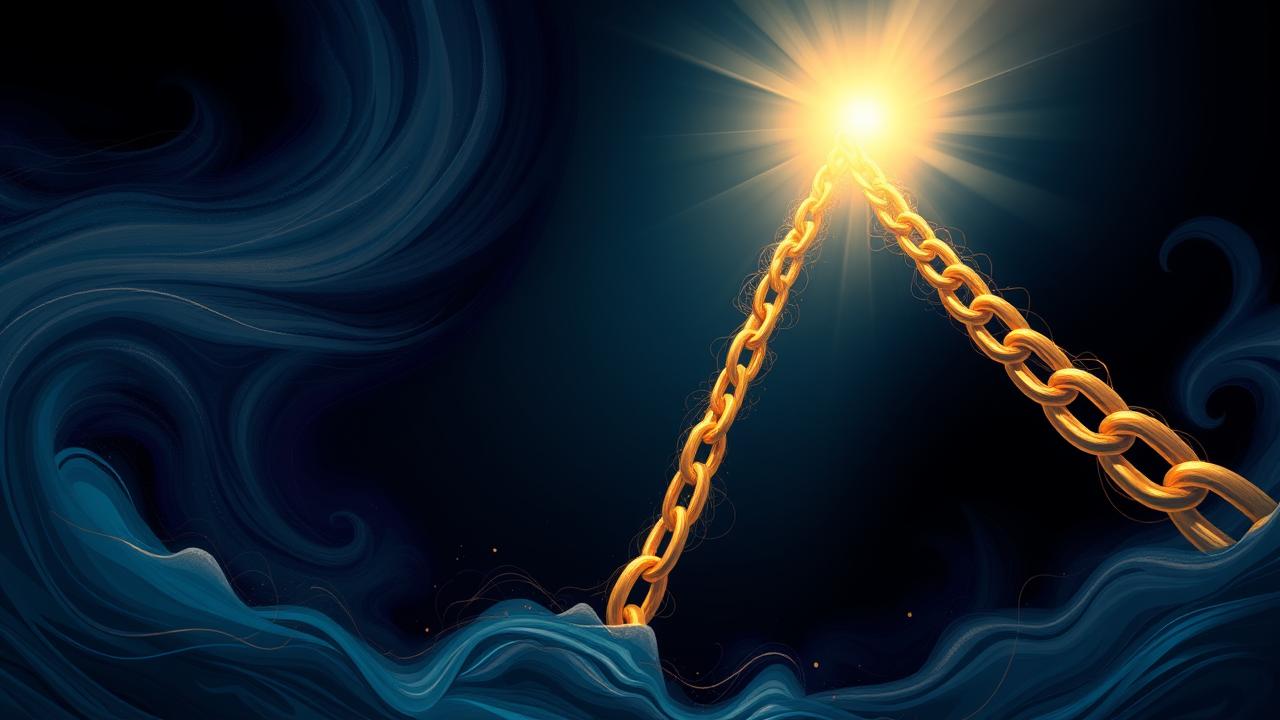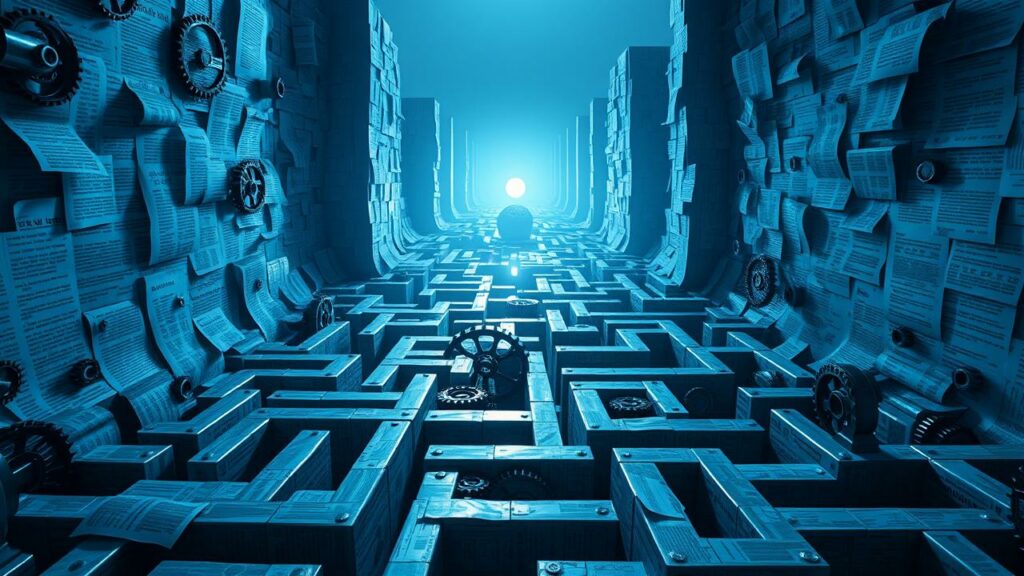Beyond ‘Enough’: How Your Viewpoint Forges Your World
The air in the room grows thin for some when opportunity knocks, not with the buzz of excitement, but with the chilling whisper of ‘what if I lose?’ For others, that same knock is a symphony, a grand opening. This isn’t fate; it’s the lens. It’s the profound chasm between a life hemmed in by perceived lack and one flung wide open to possibility. These are the shadows and sunbeams of your financial and personal world, stark scarcity vs abundance mindset examples played out in daily choices that echo through your years.
This isn’t about Pollyanna positivity versus doom-and-gloom; it’s about the fundamental operating system you’re running. One that either chokes the life from your dreams or breathes fire into them. And the most powerful, sometimes terrifying, truth? You hold the power to rewrite the code.
The Blueprint Within: Your Mind’s Architecture of Reality
The world you experience isn’t just out there. It’s filtered, painted, and often brutally edited by the beliefs you hold within. A scarcity viewpoint whispers of limited pies, not enough chairs, and the cold, hard fact that someone else’s gain must be your loss. An abundance viewpoint, however, sees a universe brimming with potential, with enough for all, where collaboration bakes bigger pies, and one person’s light only makes the room brighter. The difference isn’t just semantics; it’s the difference between a cage and a launchpad.
The Cold Grip: Anatomy of ‘Never Enough’
The scent of old wood, turpentine, and a faint, ever-present metallic tang of anxiety filled Eliseo’s workshop. Dust motes danced in the solitary beam of sunlight slicing through the grimy window, illuminating shelves laden not just with tools, but with a lifetime of hoarded scraps—wood, metal, bits of wire—each kept “just in case.” Eliseo, a master craftsman whose hands could coax poetry from stubborn oak, lived in a perpetual winter of “what if.” Each completed commission, no matter how praised or well-paid, brought not satisfaction, but a gnawing fear: what if this is the last one? He’d underbid consistently, his skill devalued by his own internal critic. The thought of hiring an apprentice, of sharing his craft or, more terrifyingly, his clientele, felt like inviting a fox into a dwindling henhouse. Overcoming fear of not enough was a battle he fought and lost every dawn.
This is the insidious nature of scarcity. It’s not just about an empty bank account; it’s an impoverished spirit, a constant state of alert for the next imagined disaster. It’s the belief that resources – love, money, opportunity, time – are desperately finite, and you’re perpetually on the verge of running out. It’s a heavy coat worn even on the sunniest day.
The Unfurling Horizon: Welcoming Infinite Possibilities
Contrast that with the cracked pavement of an abandoned lot on the city’s forgotten side. Cassius, a surveyor, didn’t see urban decay; he saw potential. The rusted chain-link fence wasn’t a barrier but a trellis waiting for vines. Armed with little more than infectious enthusiasm and a dog-eared plan, he began the slow work of transforming blight into a community garden. Initial funding was a trickle. Skepticism from some neighbors was a given. “Another dreamer,” they’d mutter, their own hopes long buried under layers of disappointment.
But Cassius operated from a different wellspring. He saw abundance not in what was, but in what could be—in the shared effort, the latent skills of the residents, the surprising generosity of a local hardware store owner who donated seeds. He believed in the multiplying power of shared purpose. And slowly, green shoots emerged, then vibrant vegetables, then a place where people connected, shared, and tasted the literal fruits of their collective labor. This is the essence of what is an abundance mindset: the conviction that there is more than enough, that collaboration creates more, that your success doesn’t diminish mine.
Life’s Crossroads: More Scarcity vs. Abundance Vignettes
The human drama is rich with these divergent paths. Here, we peel back the curtain on more scarcity vs abundance mindset examples, moments where the path chosen defined the outcome, sometimes subtly, sometimes with the force of a thunderclap.
Consider Luz, a newly minted app developer, whose tiny apartment was wallpapered with sticky notes of code and half-formed anxieties. Launching her first modest app, she watched with a knot of envy as Mylo, a contemporary from an online bootcamp, celebrated his app hitting a minor download milestone. Luz’s immediate thought: “He got lucky. That’s one less spot for me.” The market felt like a shrinking lifeboat. Every other success story was a personal affront, a confirmation of her impending failure. She’d spend hours comparing, despairing, nearly abandoning her next project before it even began.
Then there was the office scenario. Two colleagues, equally bright: one who hoarded information like a digital dragon, fearing that sharing insights would diminish their own indispensability. The other who readily offered help, shared resources, and celebrated team wins, understanding that a rising tide lifts all boats. Guess who was more stressed? Guess who was ultimately seen as a leader?
It’s the student who refuses to join a study group, convinced their peers will “steal” their understanding, versus the one who knows that teaching and learning together deepens everyone’s grasp. It’s the reflexive “I can’t afford that” versus “How can I create the resources for that?” One is a full stop; the other is an opening question.
Seeing the Divide: A Visual Guide to Mindset Realities
Sometimes, the abstract clicks into place when you can see it, hear it explained clearly. The journey from a fear-based view to one of expansive hope isn’t just motivational fluff; it’s a tangible rewiring. This video from Lavendaire offers a calm, insightful breakdown of these core differences, making the concepts accessible. It’s less about guru pronouncements and more about practical understanding from someone who’s navigated this very shift. It helps to visualize the chasm, and more importantly, the bridge.
Source: Lavendaire on YouTube
The Power Unleashed: Why This Mental Shift Transforms Everything
Why does this internal orientation hold such monumental power? Because your mindset doesn’t just color your perception; it dictates your actions, shapes your habits, and ultimately, crafts your reality. The benefits of an abundance mindset aren’t just about feeling good; they translate into tangible, life-altering outcomes. It fosters resilience in the face of setbacks – seeing them as detours or lessons, not dead ends. It cultivates creativity, because when you believe resources are plentiful, your mind is free to explore, innovate, and take calculated risks.
It magnetizes opportunities. People are drawn to positivity, to generosity, to those who see solutions instead of just problems. An abundant thinker builds stronger relationships, as they’re not operating from a place of neediness or suspicion. Critically, it can revolutionize your money mindset, breaking cycles of debt, fear-based hoarding, or an inability to see wealth-creation possibilities. This isn’t magic; it’s the potent alchemy of belief turned into purposeful action.
Forging Abundance: Concrete Steps to Remodel Your Inner Landscape
Ah, the million-dollar question: how to shift from scarcity to abundance if you’re caught in the former’s icy grip? It’s not a switch you flip overnight, no. It’s more like dedicated masonry, brick by painstaking brick, building a new internal fortress. But it can be done. The first step is brutal, beautiful awareness. Catch those scarcity thoughts red-handed. That little voice whispering, “There’s not enough,” or “They’ll get it before you do”? Drag it into the light.
Then, actively practice gratitude. Sounds trite? Only if you haven’t truly done it. Keep a journal. Force yourself, initially, to find three things daily. The warmth of the sun, a kind word, the fact your ancient car started again. This retrains your brain to scan for the good, the available, the enough.
Surround yourself with abundance, if you can. People who uplift, who see possibilities. Limit exposure to constant complainers, the professional victims. Their worldview is contagious. And experiment with generosity. Not just money – time, a listening ear, a helping hand. It powerfully signals to your subconscious that you have enough to share.
Incorporate abundance mindset affirmations. But don’t just chant them. Feel them. “I am open to receiving unexpected good.” “Opportunities flow to me easily.” Say them as if they are already your bedrock truth. It’s about reprogramming, and repetition, with emotion, is key.
Mindset in the Arena: Impact on Careers and Visionary Leadership
The fluorescent hum of the office, the clatter of keyboards, the tension before a major presentation – these are battlegrounds where mindset plays out with brutal clarity. A scarcity mindset in business is a saboteur. It’s the manager who micromanages, terrified of delegating because “no one can do it right” (or, more accurately, “no one can do it my way, and if they succeed, I’m diminished”). It’s the team leader who hoards crucial information, believing knowledge is power only when closely guarded. This breeds resentment, stifles innovation, and creates a toxic culture where everyone is watching their back.
Flora, a marketing executive with a corner office view she rarely enjoyed, knew this intimately. Every departmental success felt like a prelude to her own obsolescence. She’d spend hours dissecting colleagues’ presentations, not for inspiration, but for flaws, for a way to subtly elevate her own standing. Her team felt it, a chilling undercurrent of competition where collaboration should have thrived. Her stress levels were radioactive. Sleep was a luxury. She was, by all external measures, successful. Internally, she was starving.
Contrast this with an abundance mindset for leaders. This is the executive who champions their team’s successes, who sees potential in every individual, who fosters an environment where ideas are shared freely, and mistakes are learning opportunities. They understand that empowering others doesn’t diminish their own light; it creates a bonfire. These are the workplaces people flock to, where innovation sparks, and genuine, sustainable success is built.
Beyond the Zero Sum: The Multiplicative Power of Win-Win
The scarcity doctrine preaches a grim gospel: for me to win, you must lose. It’s the zero-sum game, a world of limited slices of pie. If they get a big piece, yours is inevitably smaller. This narrow, fear-drenched view poisons negotiations, partnerships, and even personal relationships. It assumes a fixed quantity of good, a bizarre rationing of success.
But what if the pie isn’t fixed? What if, through collaboration and ingenuity, we can bake a bigger pie? This is the heart of win-win thinking vs zero-sum thinking. An abundance mindset naturally gravitates towards solutions where everyone benefits. It asks, “How can we both get what we need, and perhaps even more?” This isn’t naive idealism; it’s strategic brilliance. It opens doors to partnerships and alliances that scarcity would slam shut. It builds trust, fosters loyalty, and creates value that multiplies rather than divides. Think of Luz, the app developer. If she’d reached out to Mylo, not with envy, but with an offer to cross-promote or share insights, perhaps both their apps would have soared higher. The win-win often lies just beyond the wall of perceived competition.
Companions on the Path: Resources to Bolster Your Abundance Mindset
Your mind is the forge, the primary instrument of transformation. Yet, even the most skilled artisan benefits from well-chosen tools. While no app can magically bestow abundance, several can serve as faithful companions, helping you track, reflect, and reinforce your journey from a constricted view to an expansive one.
Consider journaling apps (like Day One or Stoic) for consistently tracking gratitude and challenging negative thought patterns. Meditation apps (Headspace, Calm) offer guided sessions to reduce anxiety, cultivate presence, and visualize positive outcomes—all crucial for nurturing an abundance frequency. For those focusing on financial abundance, budgeting and investment apps can provide clarity and control, which, when paired with the right mindset, becomes empowering rather than restrictive. Look for tools that help you focus on what you have and what you’re building, rather than just what you lack.
Ink and Insight: Literary Guides to Deeper Understanding
The words of those who’ve charted these waters before us can be lighthouses in our own fog. These aren’t just books; they’re distillations of wisdom, roadmaps scribbled by explorers of the human psyche and its power to shape destiny.
- “Dare to Lead” by Brené Brown: Not explicitly about money, but her work on vulnerability and courage is foundational to building the resilience needed to embrace abundance and lead from a place of trust, not fear. It tears down the armor scarcity forces us to wear.
- “The Four Agreements” by Don Miguel Ruiz: Ancient wisdom that cuts through self-limiting beliefs like a surgeon’s scalpel. Simple, profound, and directly applicable to dismantling the internal narratives that feed scarcity.
- “Becoming Supernatural” by Dr. Joe Dispenza: For those ready to dive deep into the science and spirituality of transformation, Dispenza offers a compelling case for how changing your inner state—your very energy—can create profound changes in your outer world. It’s a bit “out there” for some, electrifying for others.
These are merely starting points. The right book often finds you at the right time, whispering truths your soul is ready to hear. Seek them out.
Illuminating the Path: Your Mindset Questions Answered
The journey from a constricted view to an open horizon naturally sparks questions. It’s like stepping into a new country; the language is different, the landmarks unfamiliar. Here are some common queries, explored with the aim of bringing clarity, not just easy answers because, let’s be frank, the real work is always yours.
What is an example of a scarcity mindset in everyday life?
Think of hoarding – toilet paper during a pandemic is a classic, almost comically stark example. But it’s also the person who, despite a stable income, obsessively saves every penny, terrified of spending on simple joys, living in a perpetual state of “not enough” even when their bank balance says otherwise. It’s feeling intense jealousy over a friend’s promotion, believing their success somehow diminishes your own chances. This is a key aspect of what is a scarcity mindset – the pervasive fear of lack. You’ll find countless such scarcity vs abundance mindset examples in daily interactions if you start to look.
What is the core difference between scarcity and an abundant outlook?
At its heart, scarcity believes resources (love, money, opportunities) are limited, and life is a competition for these finite goods. It’s a worldview of “not enough.” An abundance mindset, conversely, believes there’s plenty for everyone, that success is shareable and expandable. One sees a small, shrinking pie; the other sees an ever-expanding bakery. It’s a fundamental divergence in perceiving reality and your place within it, forming the basis of the scarcity vs abundance mindset dynamic.
How can I practically shift from scarcity to abundance thinking if I’m struggling financially?
This is where the rubber meets the brutal road, isn’t it? When bills are piling up, “abundance” can sound like a cruel joke. Start small. Focus on what you do have, even if it’s not monetary – skills, relationships, health, a resilient spirit. Practice “micro-gratitude.” Challenge the “I have no money” thought; reframe it to “I am currently exploring ways to generate more income.” Crucially, take one small, aligned action towards improving your financial situation, even if it’s just researching a new skill or making that dreaded phone call. The shift begins with internal acknowledgement of potential and then fuels outward action. It’s about internal state first, practical steps second, but both are vital.
Can someone have a scarcity mindset in one area of life and an abundance mindset in another?
Absolutely. It’s fascinatingly compartmentalized sometimes. You might see someone who is incredibly generous with their time and praise for others (abundance in relationships) but who is terrified of financial risk or fiercely competitive for status (scarcity in career/finances). Or someone who feels limitless in their creative pursuits but deeply insecure and possessive in their romantic life. We’re complex. The goal is to expand that abundance perspective into more and more areas of your life, understanding where those scarcity pockets still linger and why.
Broaden Your Horizons: Dive Deeper
The journey to an abundant life is ongoing. Here are a few more avenues to explore, should your curiosity be piqued:
- Forbes on Shifting Mindsets: Practical tips for the transition.
- Headspace on Overcoming Scarcity: Mindfulness techniques for a new perspective.
- Freakonomics Podcast on Mindset: An engaging dive into the economics and psychology.
- r/personalfinance: Community discussions often touch on financial mindsets.
- r/selfimprovement: Broader discussions on personal growth, often including mindset shifts.
- Lavendaire – How to Have an Abundance Mindset: The video featured earlier, for easy access.
The First Dawn: Your Step into Abundance
The truth, raw and liberating, is that the architecture of your inner world is not fixed. It can be renovated, expanded, floodlit with new understanding. The old blueprints of lack, fear, and limitation can be ceremoniously burned. Your own chapter of scarcity vs abundance mindset examples is waiting to be written—make it one of courage, collaboration, and ever-expanding horizons.
What one small, almost insignificant act of trust in possibility will you choose today? Will you share an idea, genuinely celebrate someone else’s win, or simply pause to acknowledge one good thing in your life without the usual “yes, but…”? The first breath of abundant air is yours for the taking. Inhale deeply. Begin.







